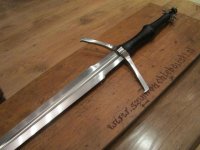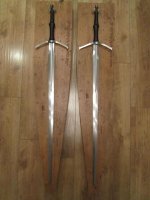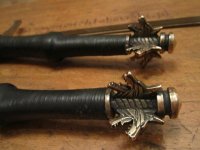Replica Witcher Swords
Hello there,
I collect replica's of swords, and i was wondering if CDPR would ever consider having a company make 1:1 Witcher sword replica's. I know there's a big amount of swords, so naturally only the most awesome ones.
If they do this, say, in United Cutlery quality, how much interest would there be in them? The price range would be around €200 - €350 for a new one.
I have some Lord of the Rings swords made by United Cutlery, and they're really solid, and good quality. And although they're not razor-sharp, they're not very dull either. Look great on the wall, especially since they come with painted wooden boards to hang them on.
Let me know what you guys think!
Hello there,
I collect replica's of swords, and i was wondering if CDPR would ever consider having a company make 1:1 Witcher sword replica's. I know there's a big amount of swords, so naturally only the most awesome ones.
If they do this, say, in United Cutlery quality, how much interest would there be in them? The price range would be around €200 - €350 for a new one.
I have some Lord of the Rings swords made by United Cutlery, and they're really solid, and good quality. And although they're not razor-sharp, they're not very dull either. Look great on the wall, especially since they come with painted wooden boards to hang them on.
Let me know what you guys think!







